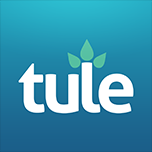SWEEP has helped a large number of growers deploy Tule sensors already this year, and we look forward to being a part of many successful projects in Round II.
Are you applying for the 2016 State Water Efficiency and Enhancement Program (SWEEP) Round II of funding? This round of funding will distribute up to $18 million to California growers investing in irrigation systems that reduce Greenhouse Gas (GHG) emissions and save water. There is a clear alignment between Tule Actual ET sensors and SWEEP’s priorities to address GHG emission reductions and water conservation.
If you would like to include Tule sensors in your application:
- Contact us for the necessary siting information in order to complete the Project Design and Budget Worksheet
- See the details below for help in filling out the application (feel free to cut and paste)
All applications must be submitted before August 5, 2016 at 5pm PST.
More on program requirements and application details can be found at the CDFA SWEEP website.
Below are some guidelines for including Tule Actual ET sensors in your SWEEP grant application:
Section IV: PROJECT TYPES (Two Apply)
Water Conservation
Weather, Soil, or Plant based sensors for irrigation scheduling
Include a detailed explanation. Keywords - efficient irrigation scheduling, electronic data output, ET based irrigation scheduling, optimize water efficiency for crops (1000 characters max)
Greenhouse Gas Emission Reduction
Reduced Pumping
For example, improved irrigation scheduling may lead to reduced pump operation times. If yes, provide detailed explanation.
Using an ET sensor to measure actual evapotranspiration in the field allows growers to know their plant water use over a broad area. Growers can then make informed irrigation decision about how much water to apply to ensure they are not over-irrigating. With a reduction in water use, there would also be a corresponding reduction in pumping time.
SECTION VI: PROPOSED WATER USE SYSTEM
Description of proposed water use system
Explain in detail the proposed water use system and associated energy sources. At a minimum, applicants should address the proposed crop, irrigation type, irrigation water management practices, fuel source(s) and water source(s).
Tule is an irrigation management tool based on measuring actual evapotranspiration, crop water stress, and applied irrigation. Daily irrigation recommendations are provided based on crop type, phenological stage, actual ET, soil water holding capacity, and annual rainfall.
(NOTE: Growers will need to also show that water deliveries can be made on a consistent basis to accommodate scheduling based on ET)
Water use after project implementation
Use the USDA NRCS Irrigation Water Savings Calculator Workbook to determine your water use before and after project implementation based on your site specific details. Tule sensors have been shown to reduce water use as much as 20% for some crop types and regions. However, this water savings varies greatly based on your current practices and proposed changes to your entire system. In the application guidelines, the CDFA suggests if deploying an advanced Irrigation Water Management (IWM) practice can result in savings up to 15%.Provide a detailed explanation of how the proposed project will measure applied water after project implementation.
Along with other improvements deployed, Tule sensors use a pressure switch to measure the start and stop times of irrigation events. Amount of applied irrigation is then calculated using the designed system flow rate. This allows growers to easily check that their irrigation orders have been carried out as they had intended. (Please note the SWEEP program still requires a flow meter to measure applied water also.)SECTION IX: Additional Considerations
Training
If awarded funding, will a representative from the agriculture operation agree to attend the training? If yes, indicate the training course and the agriculture operation representative(s) planning to attend.
Tule provides free training to clients. This includes regional in-person training events, online training tools, as well as one-on-one training for larger organizations. The Tule training program is designed to help growers learn how the tools can help improve their irrigation decisions through site specific insights in addition to reviewing best practices for similar fields.
Project Design
Please contact us for a detailed siting plan for Tule sensors at your site. Initially, one sensor per irrigation management zone should be considered. dditionally, please note that with the use of ET based irrigation scheduling (Tule) the design must include evidence that water deliveries can be made on a consistent basis to accommodate that scheduling.Budget Worksheet
Tule sensors fit under the “Other” section for Annual Service Charges. The reporting timeline under the SWEEP program is 3 years and therefore, 3 years of service should be included with your application. However, we do recommend that this 3 years of service include some amount of matching funds depending on your full application. Here’s an example for just ONE sensor:The cost of Tule for 3 years is $4500 ($1500 per year). In this example the grower is matching 50% of the total cost, as recom mended by CDFA:
| Other | Matching Funds | |||
| Description | Qty | Subtotal | Description | Cash |
| Tule Actual ET Sensor Software Service - 3 years | 1 | $2250 | Tule Actual ET Sensor Software Service - matching funds | $2250 |
Please contact us for a specific proposal based on the number of Tule sensors required at your ranch.

 By Team Tule, July 19, 2016
By Team Tule, July 19, 2016


